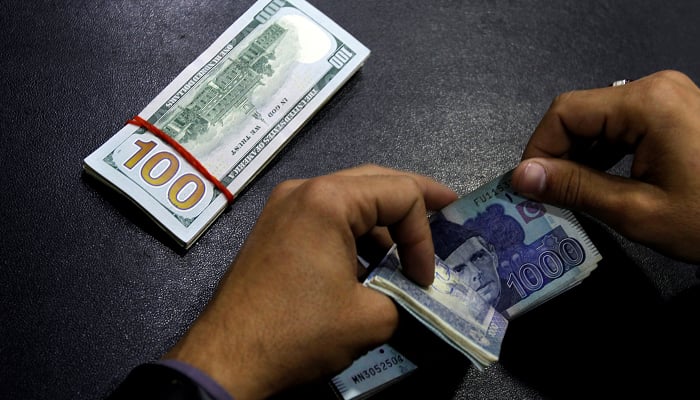Rupee to remain 'range-bound' next week
Pakistani currency weakens 0.36% against US dollar during last five sessions
August 13, 2023

- Pakistani currency closes at Rs288.49 against US dollar on Friday.
- Analysts say forex market has ample liquidity in interbank market.
- An occasional spike above Rs290 against US dollar expected.
KARACHI: The value of Pakistani currency is likely to remain stagnant for the coming week amid a balance between demand and supply in the forex market, The News reported on Saturday quoting analysts.
The rupee had fallen 0.36% in the last five sessions and closed at Rs288.49 on Friday (August 11) against the US dollar. It had closed at Rs287.43 on Monday (August 7).
The currency market was expected to decline following the dissolution of the national and provincial assemblies, however, experts said that there was no significant change and the rupee only weakened at the end of the week mostly because of the long weekend, when imports spiked, and partly because the forecast for interest rates had changed.
“The forex market has ample liquidity in the interbank market and therefore there’s no extraordinary pressure on the rupee,” analysts at Tresmark said in a note.
“Swaps have maintained their northbound journey fuelled by money management trades, and with exporters still missing in action. Remittances faltered as has been the recent trend, but with current account expected to be in surplus, rupee is expected to stay range bound with the occasional spike above 290/$,” they said.
In the first month of this fiscal year, remittances sent home to Pakistan from its citizens who are employed abroad decreased by 19.3% to $2 billion. The central bank’s foreign exchange reserves fell by $110 million to $8.04 billion in the week ending August 4.
Some of the users had asked about the sustainability of premium in the grey market, according to Tresmark.
“Premium arises due to difficulty in buying/selling dollars and when demand outstrips supply. To get rid of this, the market needs to be de-regulated. If there is material dollar demand, no amount of devaluation will erase the premium,” it added.
“A good example is our twin country Egypt, where the premium is a whopping 20%, even though the Egyptian pound depreciated by 63% in the last 1 year,” the company said.
Investors are worried about the rupee’s future under the interim administration, but analysts believe that in order to adhere to the IMF’s guidelines, a market-based approach for determining the rupee/dollar exchange rate will continue, and the difference between the interbank and open-market rates will stay at 1.25%.
Investors will anticipate the new government’s urgency to enter into a longer-tenor IMF programme, post-expiration of the current stand-by arrangement in March 2024, in order to continue to ensure Pakistan’s external gross financing needs are met with uninterrupted and timely external inflows. This is after the interim regime (assuming it ends within the typical 3 months as witnessed in the past), according to analysts.











